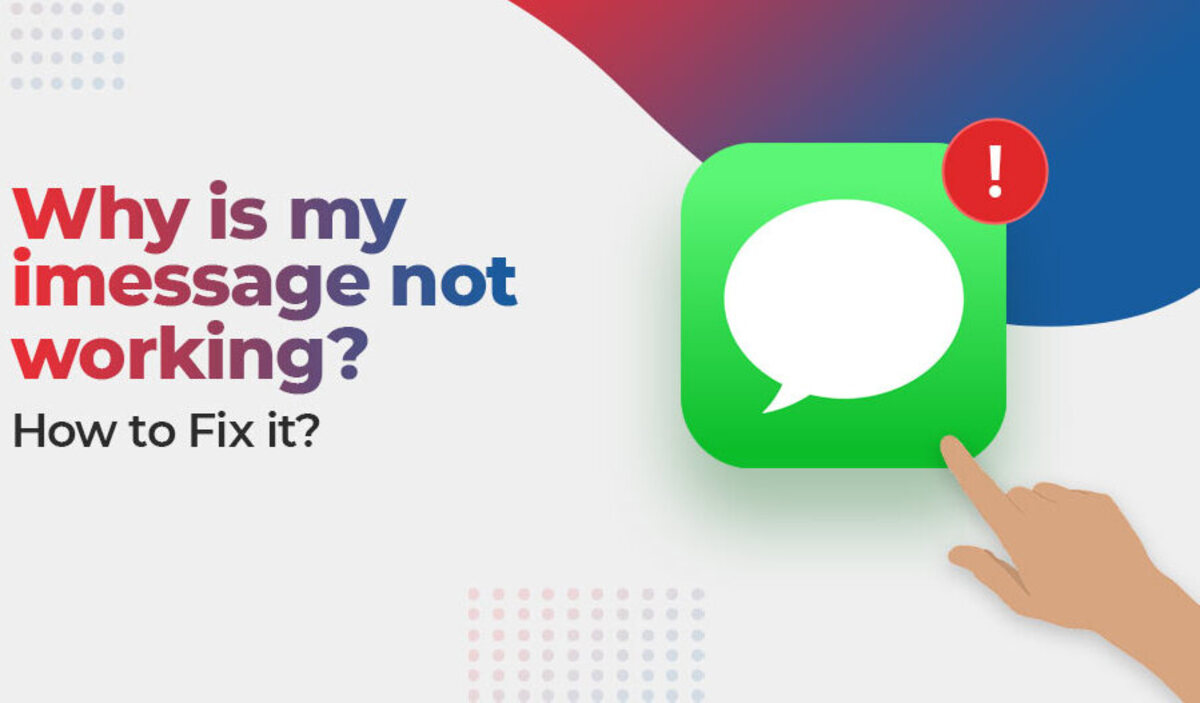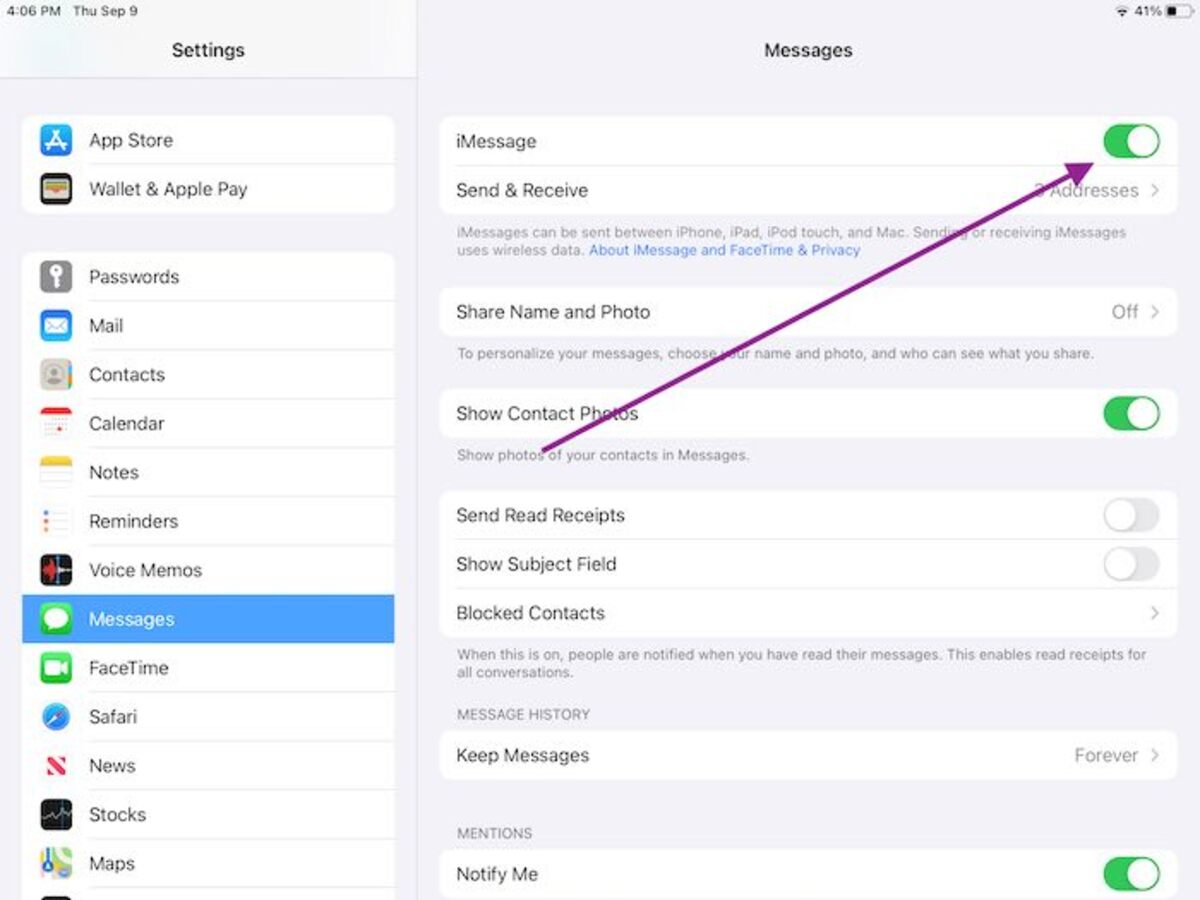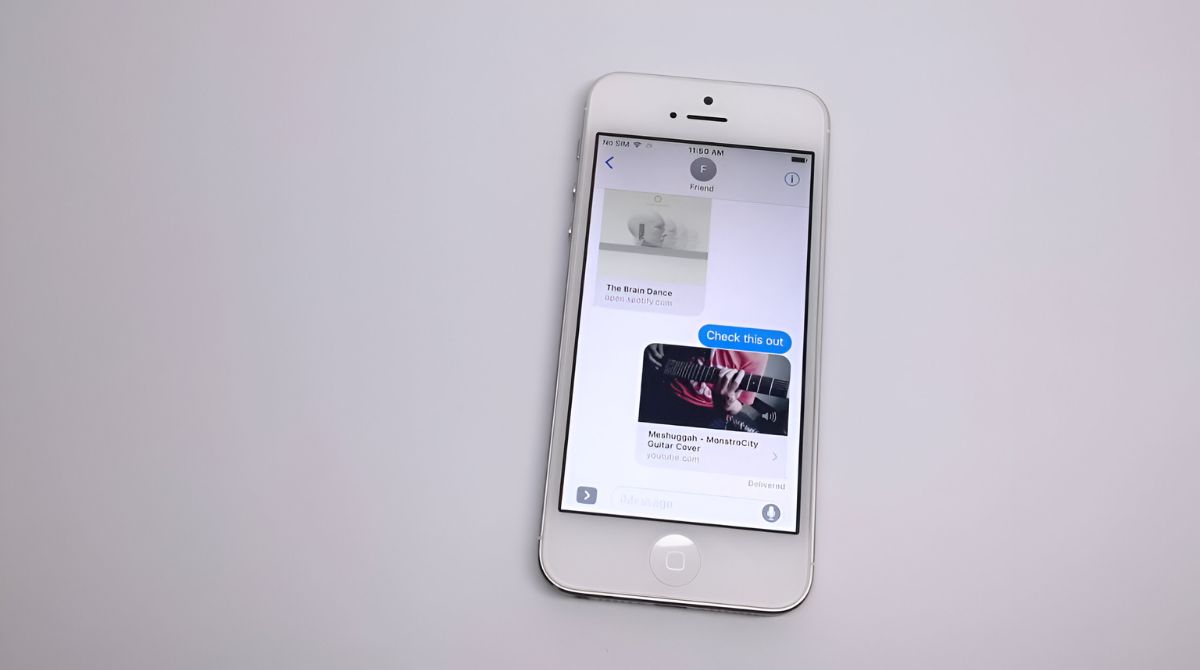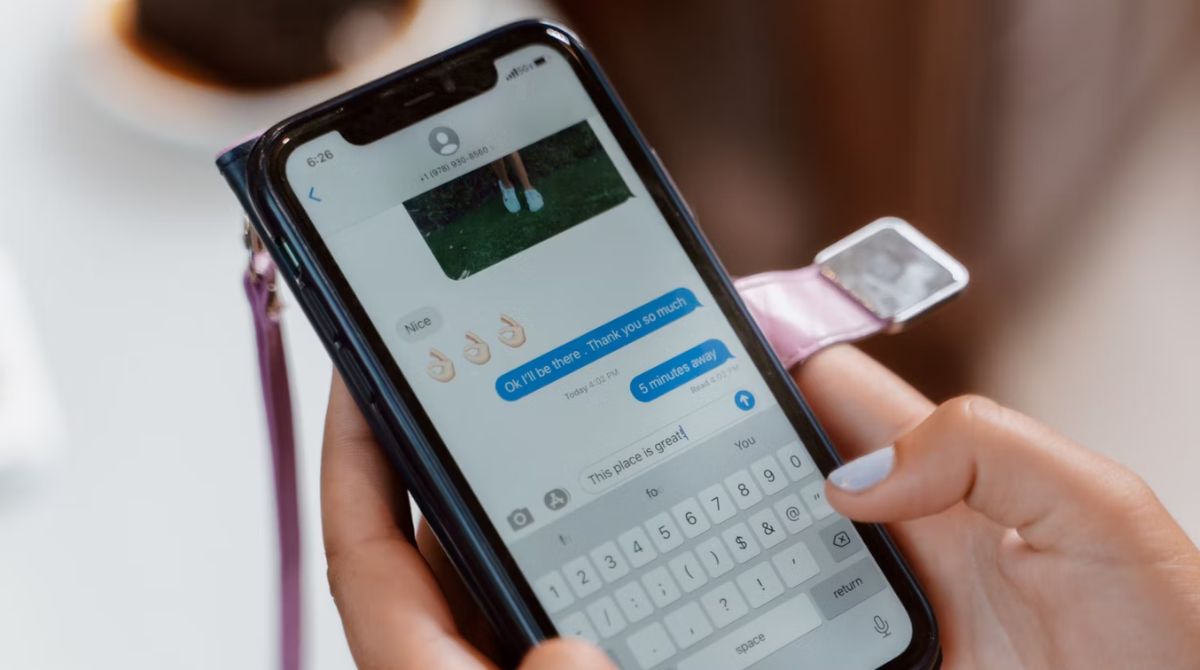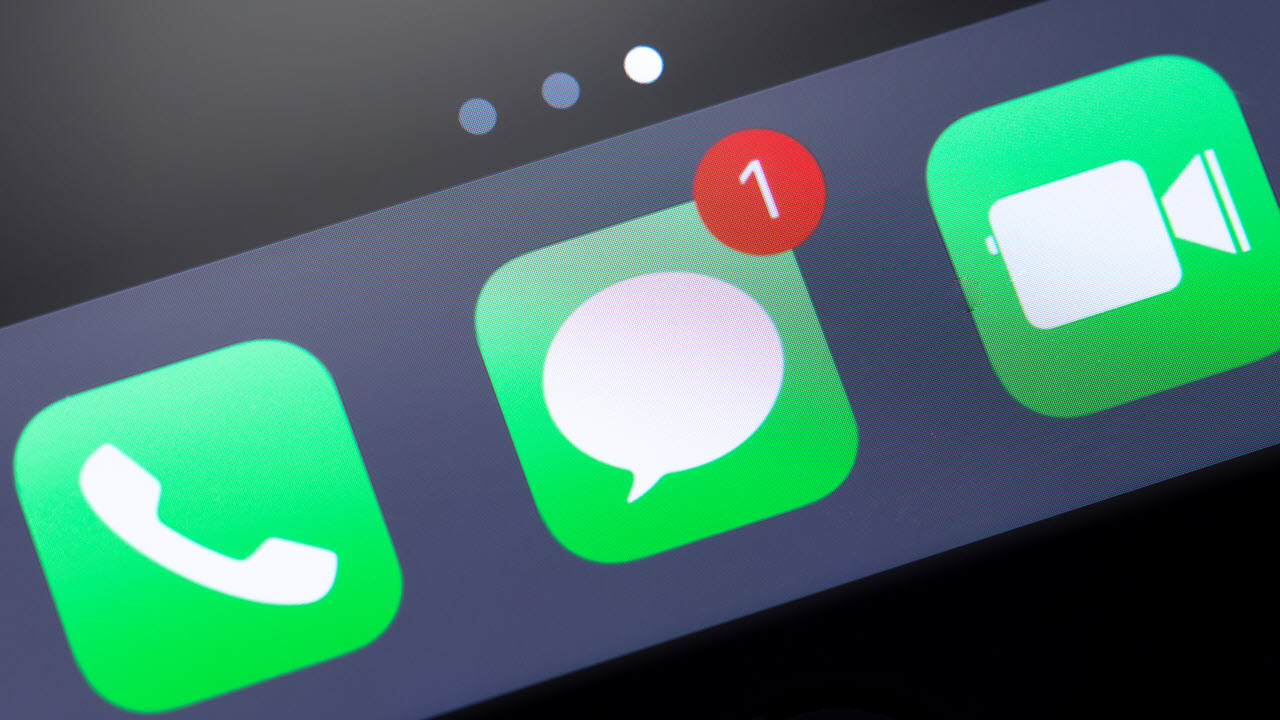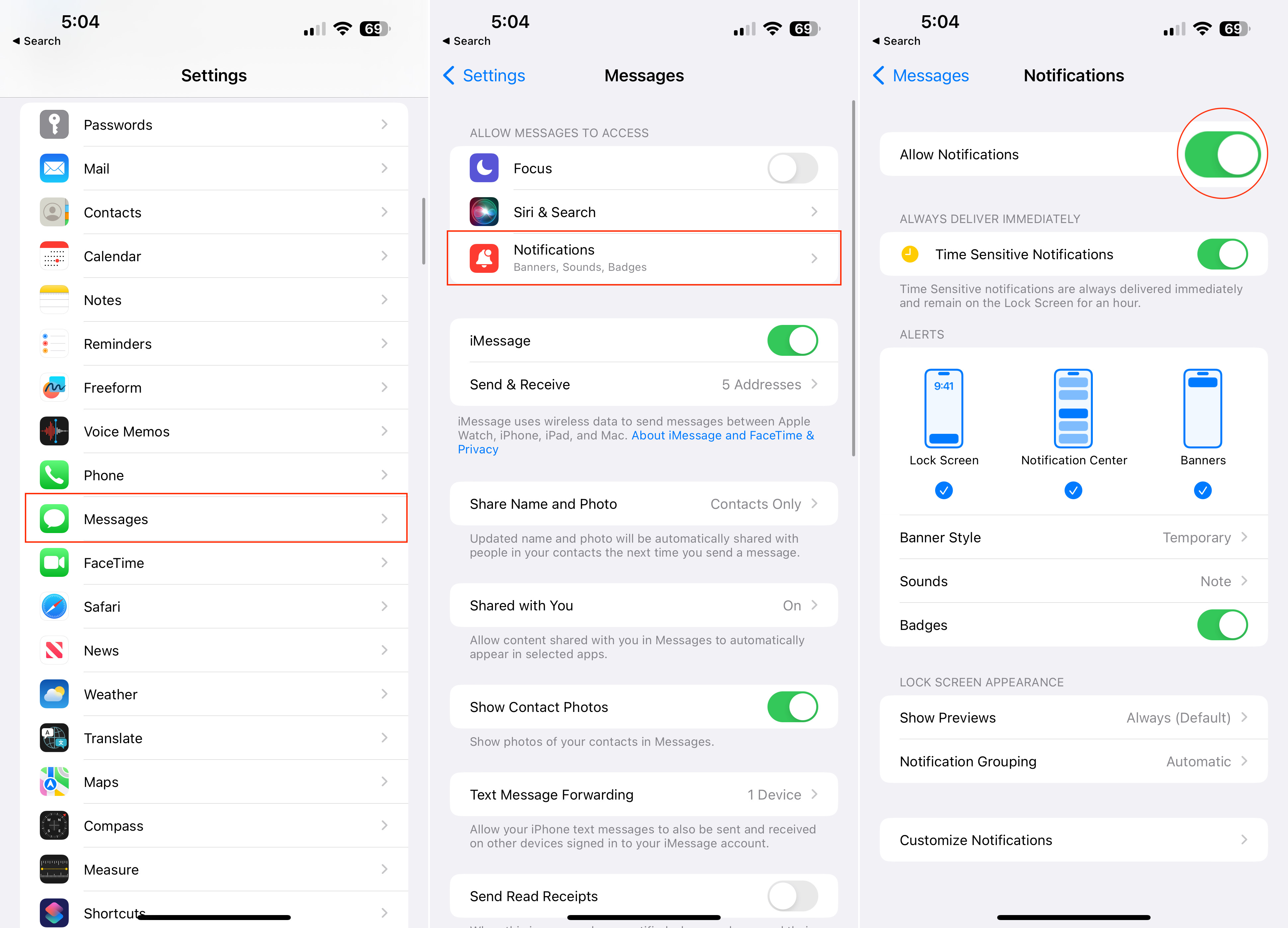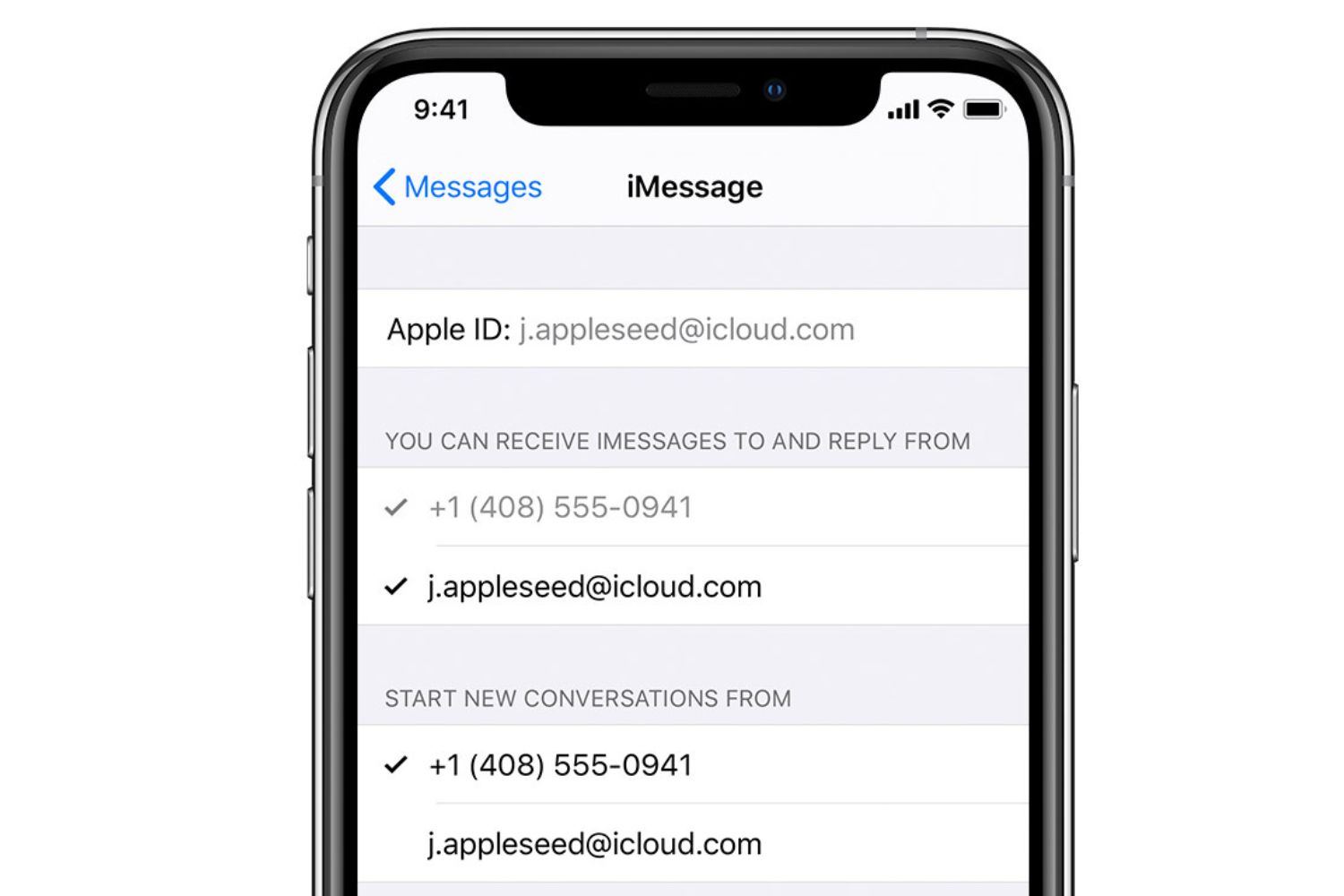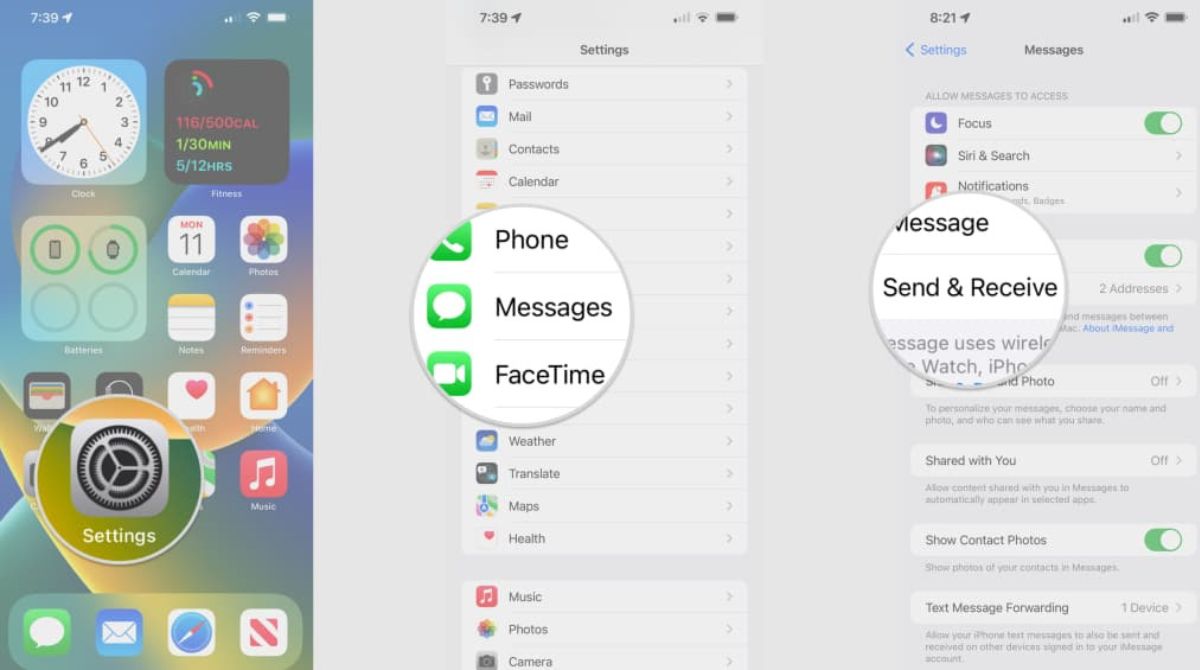Introduction
Are you experiencing issues with your iMessage? Are your messages not going through or are you unable to send or receive messages using the iMessage app on your Apple device? You’re not alone. Many users encounter problems with iMessage functionality, and it can be frustrating when this feature isn’t working properly.
iMessage is a convenient messaging service offered by Apple that allows users to send texts, photos, videos, and more to other Apple devices using an internet connection. It’s a popular feature due to its seamless integration with other Apple devices and the added benefits of read receipts, typing indicators, and end-to-end encryption for enhanced privacy.
In this article, we will explore some of the possible reasons why your iMessage may not be working and provide you with solutions to help resolve the problem. Whether it’s a simple connectivity issue or a more complex underlying problem, we’ve got you covered. So let’s dive into the troubleshooting steps to get your iMessage back up and running!
Before we delve into the solutions, it’s important to note that the steps provided here are generally applicable to most Apple devices running on the latest iOS software. However, depending on your device model and software version, some steps may vary slightly. But don’t worry, we’ll guide you through each solution step-by-step.
So, if you’re ready to troubleshoot and fix your iMessage woes, let’s get started with the first possible reason for iMessage issues: a weak or non-existent internet connection.
Possible Reasons for iMessage Not Working
There are several potential factors that could be causing your iMessage to stop working. Understanding these reasons can help you diagnose and resolve the issue more effectively. Here are some common causes of iMessage problems:
1. Internet Connectivity: One of the most common reasons for iMessage not functioning properly is a poor or unstable internet connection. iMessage requires a stable internet connection, either through Wi-Fi or cellular data, to send and receive messages. If you’re experiencing issues, check your internet connection and ensure it’s strong and stable.
2. iMessage Settings: Another reason could be that the iMessage feature is disabled on your device. It’s important to check if iMessage is enabled under the settings menu. If it’s turned off, you won’t be able to send or receive iMessages.
3. Software Update: Outdated software can often cause compatibility issues and disrupt iMessage functionality. Make sure your device is running the latest iOS software version available. Apple periodically releases software updates to address bugs and enhance performance. Updating your iOS software can often fix iMessage-related problems.
4. Network Settings: Incorrect network settings can hinder iMessage from working correctly. Resetting your network settings can often eliminate any misconfigured settings and restore iMessage functionality. However, keep in mind that resetting network settings will also remove Wi-Fi passwords, so be prepared to re-enter them afterwards.
5. iCloud Sign-in: If you’re experiencing iMessage issues across multiple devices, it’s possible that there’s a problem with your iCloud account. Signing out and signing back into your iCloud account can help refresh the connection and resolve any syncing issues that may be affecting iMessage.
6. Third-Party Apps: Sometimes, third-party apps or tweaks installed on your device can interfere with iMessage operations. If you have recently installed any new apps or modifications, try uninstalling them temporarily to see if the issue resolves.
7. Mac Settings: If you’re using iMessage on multiple devices and encounter problems specifically on your Mac, it’s worth checking the iMessage settings on your computer. Ensure that you’re signed in to the same Apple ID and that the settings match your other devices.
By identifying the possible reasons for iMessage not working, you can narrow down the troubleshooting steps and find the most appropriate solution for your situation. In the following sections, we will provide step-by-step instructions on how to resolve these issues and get your iMessage back to its optimal functioning state.
Solution 1: Check Internet Connection
When iMessage isn’t working, the first thing to check is your internet connection. iMessage requires a stable internet connection, either through Wi-Fi or cellular data, to send and receive messages. Here are a few steps to help you verify your internet connectivity:
- Check Wi-Fi Connection: If you’re using Wi-Fi, make sure you’re connected to a stable network. Open the Settings app on your device and tap on “Wi-Fi”. If the Wi-Fi is enabled, ensure that you’re connected to a reliable network with a strong signal. If necessary, try disconnecting and reconnecting to the Wi-Fi network to refresh the connection.
- Verify Cellular Data: If you’re using cellular data, ensure that it is turned on and that you have a sufficient cellular signal. Open the Settings app, go to “Mobile Data” or “Cellular” (the naming may vary depending on your device), and make sure the cellular data option is enabled. Check if you have a strong signal and sufficient data coverage in your current location.
- Restart Modem/Router: If you’re still having internet connectivity issues, try restarting your modem or router. Simply unplug the device’s power cord, wait for a few seconds, and then plug it back in. This can often resolve temporary connectivity issues with your network.
- Disable VPN: If you’re using a virtual private network (VPN) on your device, try disabling it temporarily and see if that restores iMessage functionality. Sometimes, VPN connections can interfere with internet connectivity and affect the performance of iMessage.
- Test with a Different App: If you’re unsure whether it’s an iMessage issue or a general internet problem, try using a different internet-dependent app, such as Safari or YouTube, to see if it functions properly. If other apps are also having connectivity problems, it’s likely an internet issue rather than a specific iMessage problem.
By following these steps, you can determine if the issue lies with your internet connection. If your internet connection is stable and other internet-dependent apps are working fine, move on to the next solution to troubleshoot further.
Solution 2: Ensure iMessage is Enabled
If iMessage is not working on your device, it’s essential to check if the iMessage feature is enabled. Here’s how you can ensure that iMessage is enabled:
- Open Settings: Unlock your device and open the Settings app.
- Navigate to Messages: Scroll down and tap on “Messages”.
- Check iMessage Status: On the Messages settings page, locate the iMessage option at the top and verify that it is turned on. The toggle switch should be green.
- Enable iMessage: If the toggle switch is off, tap on it to enable iMessage. You may be prompted to sign in with your Apple ID and password.
- Check Contact Information: It’s also a good idea to ensure that your contact information is correct. To do this, tap on “Send & Receive” within the Messages settings and make sure your phone number and email address are selected and marked with a checkmark.
- Restart iMessage: To refresh the iMessage service, you can try disabling iMessage and then enabling it again. Simply toggle the iMessage switch off and on again.
After you’ve verified that iMessage is enabled and your contact information is correct, go ahead and test the functionality by sending a message to another Apple device user. If the message goes through successfully, then the problem is resolved. However, if you’re still experiencing issues with iMessage, proceed to the next solution for further troubleshooting.
Solution 3: Disable and Re-enable iMessage
If iMessage is still not working properly on your device, you can try disabling and then re-enabling the iMessage feature. This can refresh the connection and resolve any temporary glitches. Follow these steps to disable and re-enable iMessage:
- Open Settings: Launch the Settings app on your device.
- Navigate to Messages: Scroll down and tap on “Messages”.
- Disable iMessage: Locate the iMessage option at the top of the Messages settings page. Toggle the switch to turn off iMessage. The switch should no longer be green.
- Restart Device: After disabling iMessage, restart your device. This is important to ensure that any residual iMessage processes are fully terminated.
- Enable iMessage: Once your device is back on, return to the Messages settings page and toggle the switch to turn on iMessage again. The switch should now be green.
- Verify Activation: After enabling iMessage, your device will attempt to activate the feature. Wait for a few seconds to see if the activation is successful. If prompted, enter your Apple ID and password to complete the activation process.
- Test iMessage: To verify if iMessage is now working properly, send a message to another Apple device user and check if it goes through successfully.
Disabling and re-enabling iMessage can often resolve communication issues between your device and Apple’s servers. This method essentially forces your device to establish a new connection with the iMessage service.
If the problem persists even after re-enabling iMessage, proceed to the next solution for further troubleshooting.
Solution 4: Reset Network Settings
If iMessage is still not functioning properly on your device, resetting the network settings can help resolve any misconfigured network settings that may be causing the issue. Here’s how you can reset the network settings:
- Open Settings: Launch the Settings app on your device.
- Go to General: Scroll down and tap on “General”.
- Find Reset: Scroll down and select “Reset” from the list of options.
- Reset Network Settings: Tap on “Reset Network Settings”. You may be prompted to enter your device passcode.
- Confirm Reset: A warning message will appear explaining that this action will remove all saved Wi-Fi networks and passwords. Tap on “Reset Network Settings” to proceed.
- Restart Device: After resetting the network settings, restart your device to apply the changes.
- Reconnect to Wi-Fi: Once your device is back on, go to the Wi-Fi settings and reconnect to your Wi-Fi network. You will need to re-enter the Wi-Fi password.
By resetting the network settings, you are essentially wiping out any customizations and preferences related to network connections on your device. This can help resolve any conflicts or misconfigurations that may have been affecting the functionality of iMessage.
After reconnecting to your Wi-Fi network, test iMessage by sending a message to another Apple device user to check if the problem has been resolved. If iMessage is still not working, let’s move on to the next solution in the troubleshooting process.
Solution 5: Update iOS Software
If iMessage continues to have issues on your device, it’s worth checking if there are any available software updates for your iOS. Apple regularly releases updates to address bugs, introduce new features, and improve overall performance. Updating your iOS software can often resolve iMessage-related problems. Here’s how you can check for and install any available updates:
- Open Settings: Launch the Settings app on your device.
- Go to General: Scroll down and tap on “General”.
- Tap Software Update: Look for the “Software Update” option and tap on it.
- Check for Updates: Your device will now check for any available software updates. If an update is available, you will see a description of the update along with an option to “Download and Install”. Tap on this option to proceed.
- Install Update: Follow the on-screen prompts to download and install the update. Your device may require a Wi-Fi connection and sufficient battery charge to proceed with the installation.
- Restart Device (If Required): After the update is installed, your device may prompt you to restart. If so, go ahead and restart your device to finalize the update process.
Once your device has been updated, check if iMessage is now functioning properly by sending a message to another Apple device user. Updating to the latest iOS software can often resolve compatibility issues, bug problems, and improve the overall performance of iMessage.
If iMessage is still not working after updating the iOS software, proceed to the next solution for further troubleshooting.
Solution 6: Sign Out and Sign In to iCloud
If iMessage is still not functioning as expected, signing out and signing back into your iCloud account can help refresh the connection and resolve any potential syncing issues with iMessage. Here’s how you can sign out and sign in to iCloud:
- Open Settings: Launch the Settings app on your device.
- Go to your Apple ID: At the top of the Settings menu, you will see your Apple ID profile picture or initials. Tap on it to access your Apple ID settings.
- Scroll down and Sign Out: Scroll down to the bottom of the Apple ID settings page and tap “Sign Out”. You will be prompted to enter your Apple ID password to confirm the sign out.
- Restart Device: After signing out, restart your device to ensure that any remaining cached data related to your iCloud account is cleared.
- Sign In to iCloud: Once your device is back on, go back to the Apple ID settings page and tap “Sign In”. Enter your Apple ID and password to sign back into your iCloud account.
- Verify iMessage Settings: After signing back in, navigate to the Messages settings and ensure that iMessage is enabled with the correct contact information selected.
By signing out and signing back in to iCloud, you are refreshing the connection and syncing process between your device and Apple’s servers. This can resolve any potential issues that may have been affecting iMessage functionality.
After signing in to iCloud and verifying your iMessage settings, test iMessage by sending a message to another Apple device user. If iMessage is still not working properly, proceed to the next solution for further troubleshooting.
Solution 7: Check iMessage Settings on Mac
If you’re experiencing iMessage issues specifically on your Mac, it’s essential to check the iMessage settings on your computer. Misconfigured settings on your Mac can lead to problems with iMessage synchronization across devices. Here’s how you can check and adjust iMessage settings on your Mac:
- Open Messages: Launch the Messages app on your Mac.
- Go to Preferences: In the top menu bar, click on “Messages” and then select “Preferences” from the drop-down menu.
- Verify Account: In the Preferences window, go to the “Accounts” tab. Make sure your Apple ID account is listed and selected. If not, click on the “+” button to add your Apple ID account.
- Check Contact Settings: Under the “Accounts” tab, ensure that your correct phone number and email address are selected for sending and receiving iMessages.
- Enable iMessage: If the iMessage option is not already enabled, check the box next to “Enable this account” under the “Accounts” tab. This should activate iMessage on your Mac.
- Reset Messages: If you’re still experiencing issues, you can try resetting the Messages app on your Mac. Go to the “General” tab in the Preferences window and click on the “Reset Messages” button.
Reviewing and adjusting the iMessage settings on your Mac can help ensure that your device is properly connected to the iMessage service. By confirming your Apple ID account, contact information, and enabling iMessage, you can resolve any configuration issues that may be affecting the synchronization of iMessages on your Mac.
After checking the iMessage settings on your Mac, test iMessage by sending a message to another Apple device user. If the problem persists, proceed to the next solution for further troubleshooting.
Solution 8: Contact Apple Support
If you have tried all the previous solutions and iMessage is still not working on your device, it may be time to reach out to Apple Support for further assistance. Apple Support has a dedicated team of experts who can help diagnose and troubleshoot more complex issues with iMessage. Here’s how you can contact Apple Support:
- Visit Apple Support Website: Go to the Apple Support website (support.apple.com) on a browser.
- Select your Device: Click on the “Products” tab and choose your Apple device from the list.
- Choose iMessage: In the “Support by Topic” section, select “iMessage, FaceTime & Communications” or a similar category that relates to iMessage issues.
- Browse Support Articles: Apple Support provides a wide range of articles that cover various iMessage problems. Browse through the articles to see if there’s a solution that matches your specific issue.
- Contact Apple Support: If you can’t find a solution in the support articles, you can initiate a support chat or request a call from an Apple Support representative. Follow the prompts on the website to reach out for personalized assistance.
Apple Support is well-equipped to handle technical inquiries and provide guidance on resolving iMessage problems. Their expertise can help you identify any underlying issues, software conflicts, or device-specific glitches that may be causing the iMessage issue.
Remember to provide detailed information about your device model, iOS software version, and a clear description of the problem when contacting Apple Support. This will help them better understand your situation and provide more targeted assistance.
Apple Support is dedicated to helping resolve customer issues, and they will do their best to assist you in getting your iMessage working again.







